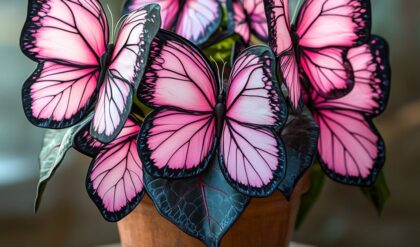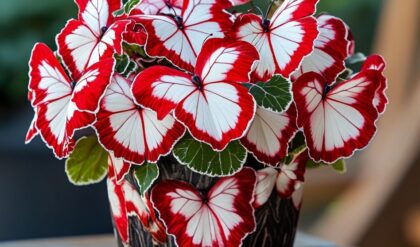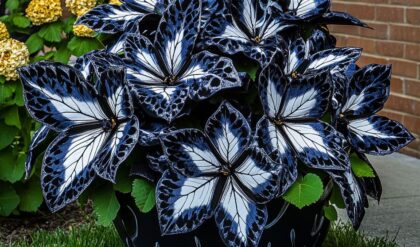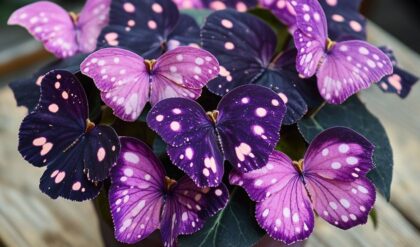When one thinks of enchanting tropical plants, the Colocasia gigantea, commonly known as the giant elephant ear, often comes to mind. With its enormous, heart-shaped leaves and striking presence, this plant evokes images of lush rainforests and exotic adventures. Beyond its aesthetic appeal lies a myriad of environmental and cultural implications that make it a fascinating subject for gardening enthusiasts and botanists alike.

A Giants’ Appearance
The captivating beauty of Colocasia gigantea is predominant in varieties such as the Thailand Giant strain, which can reach impressive heights of 7-10 feet. Imagine planting these titans in your garden; their massive leaves stretching skyward, casting delightful shadows over smaller plants while creating a visually stunning landscape. This grandeur is not just ornamental; it serves practical purposes too. The ample foliage can provide shelter for smaller plants from direct sunlight or heavy rainfall, establishing an ecosystem of interdependence in your backyard.
Towering Leaves and Graceful Silhouettes
The giant elephant ear plant is a true sight to behold, with its colossal leaves that can measure up to 3 feet in length and 2.5 feet in width. These leaves are shaped like an inverted heart, with a deep green hue and a velvety texture that catches the light in a mesmerizing way. When the wind blows, the leaves sway gracefully, creating a captivating dance that adds movement and depth to the garden.
One of the most remarkable aspects of the Colocasia gigantea is its ability to thrive in a wide range of environments. Whether planted in the ground or grown in large containers, these plants can adapt and flourish, making them a versatile choice for gardeners and landscape designers. Their towering presence can be used to create focal points, dramatic backdrops, or lush, tropical-inspired vignettes that instantly transport the viewer to a different realm.
Practical Applications of the Giant Foliage
While the visual appeal of the Colocasia gigantea is undoubtedly captivating, the plant also serves practical purposes in the garden. The enormous leaves can provide valuable shade and protection for smaller, more delicate plants, creating a microclimate that allows a diverse range of species to thrive. This can be particularly beneficial in regions with intense sunlight or heavy rainfall, where the giant elephant ear’s foliage can act as a natural umbrella, shielding more sensitive plants from the elements.
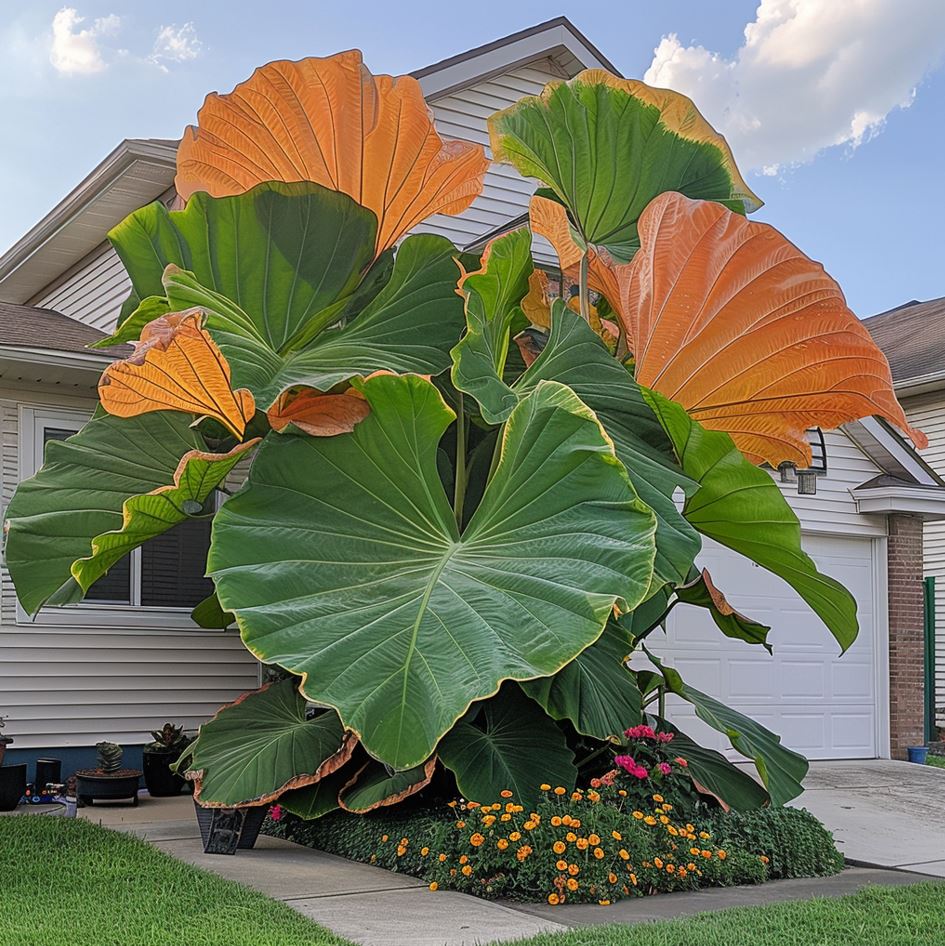
Moreover, the large leaves can also be utilized as a natural source of moisture retention. In hot, dry climates, the plants can help regulate humidity levels by releasing water vapor through their stomata, effectively creating a more hospitable environment for the surrounding vegetation. This makes the Colocasia gigantea an invaluable addition to drought-prone gardens or those seeking to create a lush, tropical oasis.
Environmental Impact
From an ecological standpoint, the Colocasia species play a vital role in their native environments. Their vast leaves absorb considerable amounts of carbon dioxide and release oxygen, contributing positively to air quality. In regions susceptible to flooding, these plants thrive in wet conditions and help manage water levels, acting like natural sponges that soak up excess moisture. However, introducing them into non-native environments poses risks such as invasiveness, where they could outcompete local flora.
Carbon Sequestration and Oxygen Production
The enormous leaves of the Colocasia gigantea are not just visually striking; they also play a crucial role in the plant’s environmental impact. These leaves are highly efficient at absorbing carbon dioxide from the atmosphere and converting it into oxygen through the process of photosynthesis.
As climate change continues to be a pressing global concern, the ability of the giant elephant ear to sequester carbon and release oxygen makes it a valuable asset in the fight against rising greenhouse gas levels. By incorporating these plants into gardens, urban landscapes, and even larger-scale agricultural or reforestation efforts, we can actively contribute to improving air quality and mitigating the effects of climate change.
Flood Management and Water Retention
In regions prone to flooding, the Colocasia gigantea can be an invaluable ally in managing water levels and preventing soil erosion. The plant’s expansive root system and thick, fleshy leaves act as natural sponges, absorbing and holding onto excess moisture. This can be particularly beneficial in areas that experience heavy rainfall or seasonal flooding, helping to regulate water flow and prevent soil saturation that can lead to landslides or property damage.
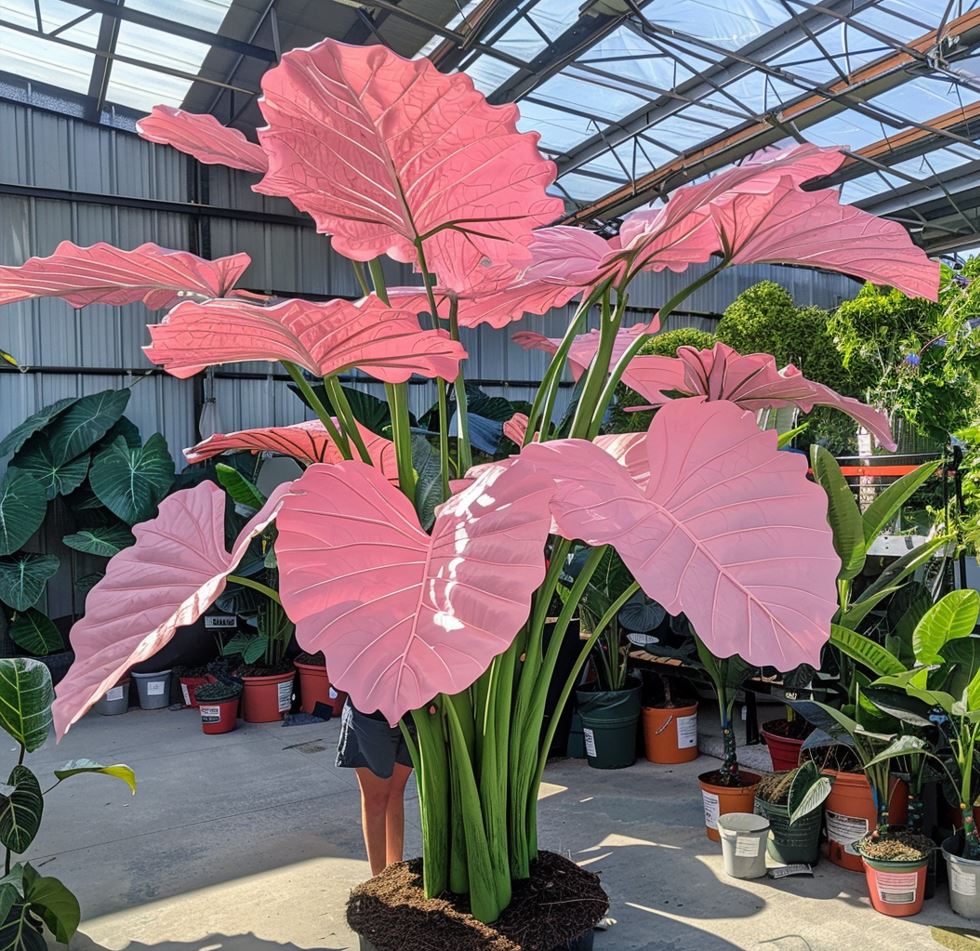
Moreover, the giant elephant ear’s ability to thrive in waterlogged conditions makes it a suitable choice for wetland restoration projects or the creation of natural water filtration systems. By strategically planting these plants in areas prone to flooding, we can harness their natural water-retention capabilities to create sustainable and resilient ecosystems that can better withstand the impacts of climate change.
Invasive Potential and Responsible Cultivation
While the Colocasia gigantea can be an incredible asset in its native environments, it’s important to consider the potential risks of introducing this plant into non-native regions. In some cases, the giant elephant ear has been known to become invasive, outcompeting local flora and disrupting the delicate balance of the ecosystem.
Gardeners and landscape designers must exercise caution when cultivating the Colocasia gigantea, ensuring that appropriate measures are taken to prevent the plant from spreading beyond its intended boundaries. This may involve carefully monitoring its growth, containing the plant within specific areas, or opting for less aggressive Colocasia varieties that are less likely to become invasive.
By prioritizing responsible cultivation practices and considering the local ecosystem, we can harness the environmental benefits of the Colocasia gigantea while minimizing the potential for negative impacts. This requires a nuanced understanding of the plant’s growth habits, environmental preferences, and the specific conditions of the region in which it is being introduced.
Cultural Significance
Culturally, Colocasia gigantea has been embraced in various societies, particularly in Southeast Asia. The plant is often associated with traditional culinary practices, its tubers playing a crucial role in diets across many cultures. The hearty texture and flavor make them a staple for numerous recipes, reminding us how deeply intertwined agriculture and ornamental gardening can be. This dual significance showcases how beauty and utility are effortlessly coupled in nature.
Culinary Traditions and Culinary Delights
The Colocasia gigantea, or giant elephant ear, has long been revered in many Southeast Asian cultures for its culinary versatility and importance in traditional diets. The plant’s starchy tubers, which can grow to impressive sizes, have been a staple food item for centuries, finding their way into a wide array of dishes that celebrate the region’s rich gastronomic heritage.
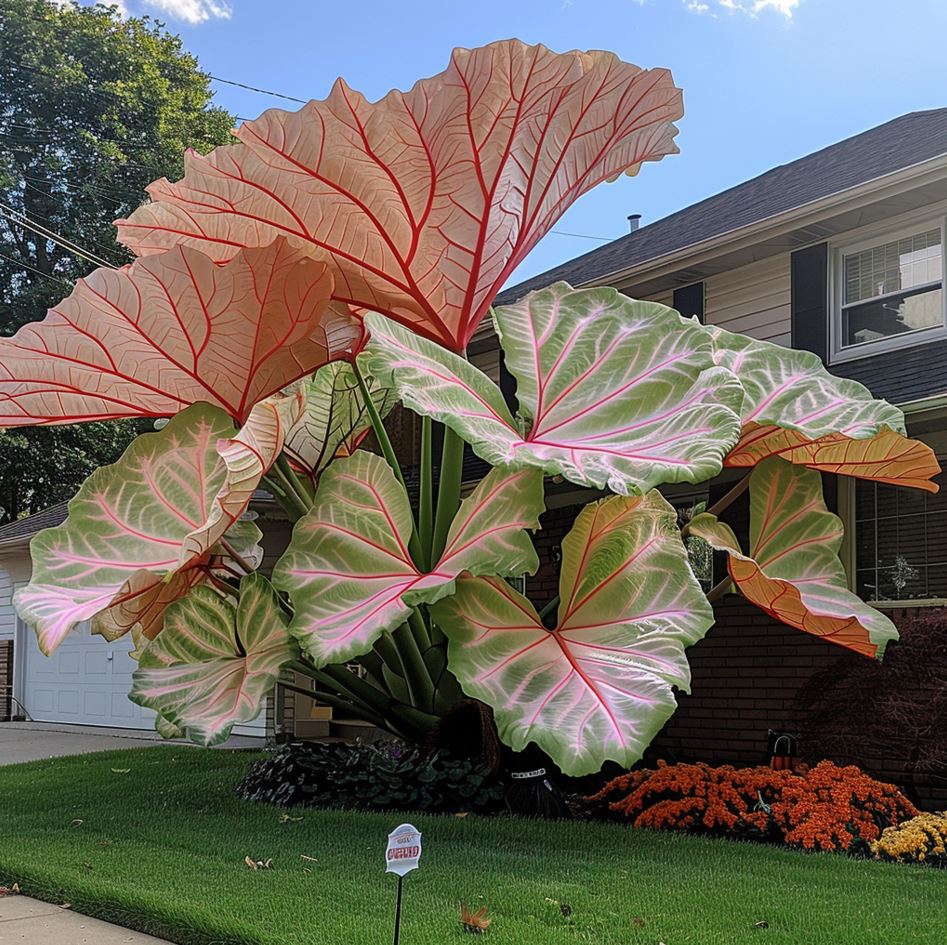
In Thailand, for example, the giant elephant ear tubers are a key ingredient in the beloved dish known as “Taro Curry” or “Massaman Curry.” The tubers are peeled, cubed, and simmered in a fragrant coconut milk-based curry, often infused with aromatic spices like cinnamon, cardamom, and star anise. The result is a hearty, comforting dish that showcases the unique flavor and texture of the Colocasia tubers.
Similarly, in the Philippines, the giant elephant ear is known as “Gabi” and is widely used in traditional dishes such as “Laing,” a spicy, coconut-based dish featuring shredded taro leaves and tubers. The tubers can also be boiled, mashed, and mixed with coconut milk and sugar to create a sweet and creamy dessert known as “Ginataan.”
Beyond their culinary applications, the Colocasia gigantea has also been incorporated into various cultural and religious rituals in Southeast Asia. In some communities, the leaves are used to wrap offerings or as a base for traditional delicacies during festivals and celebrations. This deep-rooted connection between the plant and the region’s cultural heritage underscores the profound significance of the Colocasia gigantea in the lives of those who have embraced it.
Ornamental Significance and Horticultural Traditions
While the Colocasia gigantea is widely recognized for its culinary importance, it has also long been cherished for its ornamental value in traditional horticulture and gardening practices. In many Southeast Asian countries, the giant elephant ear has been a beloved addition to lush, tropical-inspired gardens, where its towering presence and striking foliage have captivated the imaginations of gardeners and landscape designers alike.
In Bali, for instance, the Colocasia gigantea is often incorporated into the intricate and highly symbolic garden designs that are an integral part of the island’s rich cultural heritage. These gardens, known as “Taman,” are meticulously curated spaces that blend the beauty of nature with spiritual and philosophical elements, creating a harmonious and restorative environment.
Similarly, in the Philippines, the giant elephant ear has been a staple in traditional home gardens, where it has been valued not only for its aesthetic appeal but also for its practical applications. The plant’s large leaves have been used to provide shade and shelter for other, more delicate, species, while its tubers have been harvested and incorporated into various culinary and medicinal preparations.
This deep-rooted tradition of incorporating the Colocasia gigantea into both ornamental and utilitarian garden designs speaks to the plant’s enduring significance in the cultural fabric of Southeast Asia. By preserving and celebrating these horticultural practices, we not only honor the region’s rich heritage but also inspire a renewed appreciation for the natural world and the intricate ways in which it has been woven into the lives of those who have come before us.
Care and Cultivation Insights
Regarding care, growing the Thailand Giant variant of this magnificent plant isn’t exceptionally demanding but does require attention to specific conditions to flourish. It thrives best in full to partial sun and high humidity, making it a quintessential choice for tropical gardens or homes with greenhouse setups. Gardeners must also consider the soil — well-draining potting mixes are ideal to prevent rot. Such knowledge empowers enthusiasts, inviting them to cultivate not just plants but sustainable ecosystems within their own homes.
Optimal Lighting and Humidity Requirements
The Colocasia gigantea, or giant elephant ear, is a plant that thrives in warm, humid environments with ample sunlight exposure. When it comes to lighting requirements, the Thailand Giant variety typically performs best in full to partial sun, meaning it can tolerate some shade but will achieve its most robust growth and vibrant foliage when placed in a location that receives at least 6 hours of direct sunlight per day.
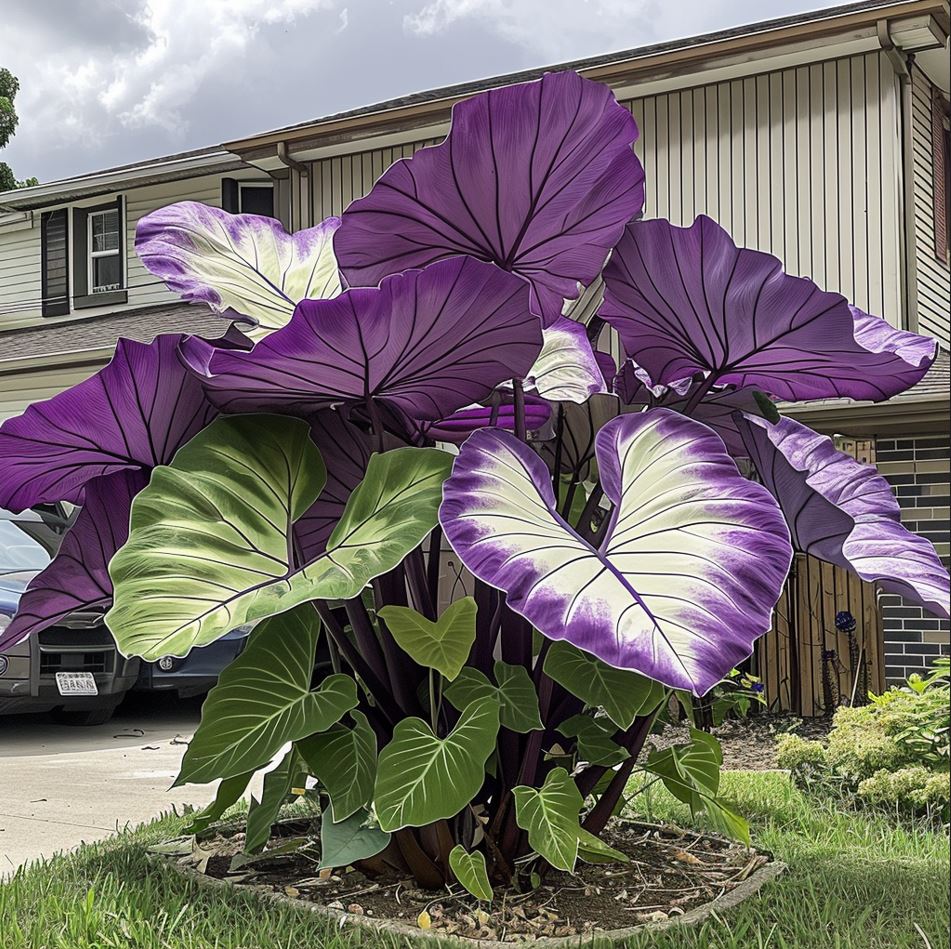
In terms of humidity, the giant elephant ear is a plant that truly revels in high-moisture environments. In its native tropical habitats, the Colocasia gigantea is accustomed to the warm, humid air that is characteristic of rainforests and other lush, verdant ecosystems. When cultivating this plant in a garden or indoor setting, it’s essential to replicate these conditions as closely as possible to ensure its optimal health and growth.
One effective way to achieve the necessary humidity levels is by misting the plant’s foliage regularly, especially during the drier months or in low-humidity environments. Alternatively, gardeners can consider incorporating the giant elephant ear into a greenhouse setup or placing it near a humidifier to maintain the ideal moisture levels. By meeting the plant’s lighting and humidity requirements, gardeners can unlock the full potential of the Colocasia gigantea, enjoying its magnificent size and striking appearance.
Soil Preferences and Planting Considerations
In addition to the lighting and humidity needs, the Colocasia gigantea also has specific preferences when it comes to the soil in which it is grown. This plant thrives in well-draining, nutrient-rich potting mixes that provide ample moisture retention without becoming waterlogged.
When planting the giant elephant ear, it’s important to choose a growing medium that is aerated and free-draining, as the plant’s fleshy roots are susceptible to rot if left in overly saturated soil for extended periods. A high-quality potting mix amended with compost or other organic matter can provide the ideal balance of nutrients, moisture, and drainage, allowing the Colocasia gigantea to flourish.
Another crucial consideration when cultivating the giant elephant ear is the depth at which the plant is positioned in the soil. The tubers, which are the primary storage organs for the plant, should be planted at a depth that allows for adequate coverage while still allowing room for the leaves to emerge and stretch skyward. As a general rule, the top of the tuber should be planted 2-4 inches below the soil surface, depending on the size of the specimen.
By understanding and catering to the Colocasia gigantea’s precise soil preferences, gardeners can create an environment that allows this magnificent plant to reach its full, towering potential, adding a captivating and visually striking element to any garden or indoor space.
Propagation and Overwintering Strategies
The Colocasia gigantea, or giant elephant ear, can be propagated through a variety of methods, allowing gardeners to expand their collections or share the beauty of this plant with others. One of the most common propagation techniques is division, which involves carefully separating the plant’s rhizomatous tubers and replanting them in new locations.
When dividing the Colocasia gigantea, it’s essential to ensure that each new division has at least one viable eye or growth point. This will help ensure successful establishment and continued growth of the new plants. Gardeners should also pay close attention to the health and integrity of the tubers, as any damage or rot can compromise the plant’s ability to thrive.
In regions with distinct seasonal changes, the Colocasia gigantea may require special overwintering strategies to ensure its survival during the colder months. In temperate climates, the plant’s tubers can be dug up, cleaned, and stored in a cool, dry place, such as a basement or root cellar, until the following spring. When ready to replant, the tubers can be divided and placed back into the ground, where they will once again sprout and grow into the magnificent giants we know and love.
By mastering the propagation and overwintering techniques for the Colocasia gigantea, gardeners can not only maintain their existing plants but also expand their collections, sharing the enchantment of these botanical titans with others. This knowledge empowers enthusiasts to cultivate not just individual specimens but entire gardens and ecosystems that celebrate the beauty and diversity of the natural world.
A Lens on Next-Generational Gardening
Looking ahead, embracing plants like Colocasia gigantea could vastly influence urban greening initiatives. As cities grapple with pollution and concrete jungles, integrating such vibrant horticultural options may breathe life into urban areas. Future generations might find themselves in spaces dominated by botanical giants that facilitate restorative practices for both community and environment. This shift could encompass diverse forms of greenery—from towering elephant ears to delicately tailored rooftop gardens, promoting biodiversity even amidst urban development.
Urban Greening Initiatives and the Giant Elephant Ear
As cities around the world continue to grapple with the challenges of urbanization, the integration of vibrant, nature-inspired elements has become an increasingly important focus for urban greening initiatives. In this context, the Colocasia gigantea, or giant elephant ear, stands out as a plant that could play a pivotal role in transforming the look and feel of our concrete jungles.
Imagine a future where towering, lush stands of Colocasia gigantea line city streets, providing not only a visually striking contrast to the surrounding architecture but also delivering tangible environmental benefits. The plant’s massive leaves, capable of sequestering carbon and releasing oxygen, could help improve air quality and contribute to the overall ecological resilience of urban areas.
Moreover, the giant elephant ear’s ability to thrive in wet conditions could make it a valuable asset in flood-prone cities, where its water-absorbing properties could help mitigate the impact of heavy rainfall and reduce the risk of urban flooding. By strategically incorporating these botanical giants into urban landscapes, city planners and landscape architects can create oases of green that not only beautify the environment but also actively work to address some of the pressing challenges faced by modern urban centers.
Diverse Greenery and Biodiversity-Boosting Initiatives
As cities continue to evolve and adapt to the needs of their growing populations, the integration of diverse forms of greenery will be essential in promoting biodiversity and fostering sustainable, nature-centric communities. While the towering presence of the Colocasia gigantea may capture the imagination, the future of urban greening initiatives could encompass a vast array of horticultural options, each playing a unique role in creating vibrant, thriving ecosystems.
Alongside the giant elephant ear, future urban landscapes may feature delicately tailored rooftop gardens, lush vertical walls, and meticulously curated pocket parks, all working in harmony to support a wide range of flora and fauna. These diverse horticultural elements can work together to create interconnected habitats, providing food, shelter, and breeding grounds for a multitude of species, from pollinators to small mammals and birds.
By embracing this holistic, biodiversity-focused approach to urban greening, city planners and community leaders can empower future generations to reconnect with the natural world, even amidst the concrete and steel of the built environment. This shift in mindset could lead to the emergence of truly sustainable urban centers, where the coexistence of humans and nature is not only possible but actively celebrated and fostered.
The Colocasia Gigantea as a Symbol of Harmony and Resilience
As we look ahead to
The Colocasia Gigantea as a Symbol of Harmony and Resilience
In contemplating the future, the Colocasia gigantea emerges not only as a striking botanical specimen but also as a profound symbol of harmony and resilience within our urban landscapes. As society grapples with the rigors of climate change, habitat loss, and societal disconnect from nature, this majestic plant serves as a reminder of the interconnectedness of life and the necessity of nurturing our natural environments.
The giant elephant ear, with its robust form and lush foliage, encapsulates the potential for both beautiful aesthetics and functional environmental benefits. The plant acts as a green sentinel, standing tall in the fight against ecological degradation. Its broad leaves create microclimates that provide shelter for various organisms and help maintain moisture levels in the surrounding soil. This symbiotic relationship highlights the concept that plants are not merely decorative elements; they are integral components of a balanced ecosystem.
Additionally, the very act of cultivating Colocasia gigantea promotes a sense of stewardship among communities. As gardeners devote time and effort to nurturing these towering plants, they cultivate an appreciation for nature’s resilience. The capacity of the giant elephant ear to thrive under adverse conditions—be it in nutrient-poor soils or through inundation during heavy rains—serves as an inspiration to individuals facing their own life challenges. By drawing parallels between the tenacity of this plant and the human spirit, we can foster a deeper understanding of what it means to coexist harmoniously with the environment.
With its powerful presence, Colocasia gigantea presents opportunities for educational initiatives focused on sustainability. Community gardens featuring this plant could serve as living classrooms where individuals learn about regenerative practices, native pollinator support, and responsible horticulture. When children and adults alike engage intimately with such plants, they often develop a sense of responsibility toward nature—understanding that their actions impact not only local ecosystems but the planet at large. In fostering this awareness, we advance forward-thinking generations who actively seek ways to enhance biodiversity within their own communities.
Conclusion
In summary, the Colocasia gigantea, or giant elephant ear, stands as more than just a striking plant; it embodies ideals of growth, diversity, and resilience—qualities vitally needed as modern society navigates both urbanization and climate challenges. By embracing this majestic giant in our gardens, landscapes, and cities, we prospectively contribute to more sustainable practices that promote ecosystem health and biodiversity.
As we envision urban greening initiatives infused with vibrant flora like the Colocasia gigantea, we set the stage for future generations who will inhabit spaces enriched by nature’s beauty. Moreover, the qualities exemplified by this plant encourage humanity to reflect on our own adaptability and our commitments to coexisting with the earth effectively.
Understanding the propagation and overwintering strategies of the giant elephant ear also facilitates ongoing enjoyment of its beauty while empowering communities to share knowledge and nurture connections to the natural world. Collectively, we stand at a critical juncture where integrating wisdom learned from prominent plants like Colocasia gigantea can inspire us to cultivate healthier, more resilient societies—both for ourselves and for generations to come. So let us plant, nurture, and revel in the bountiful beauty of the earth, guided by the extraordinary characteristics embodied in the Colocasia gigantea. Back Viết tiếpNext
